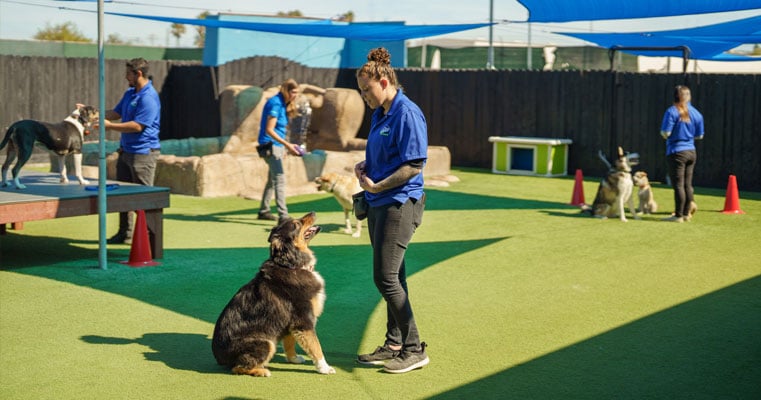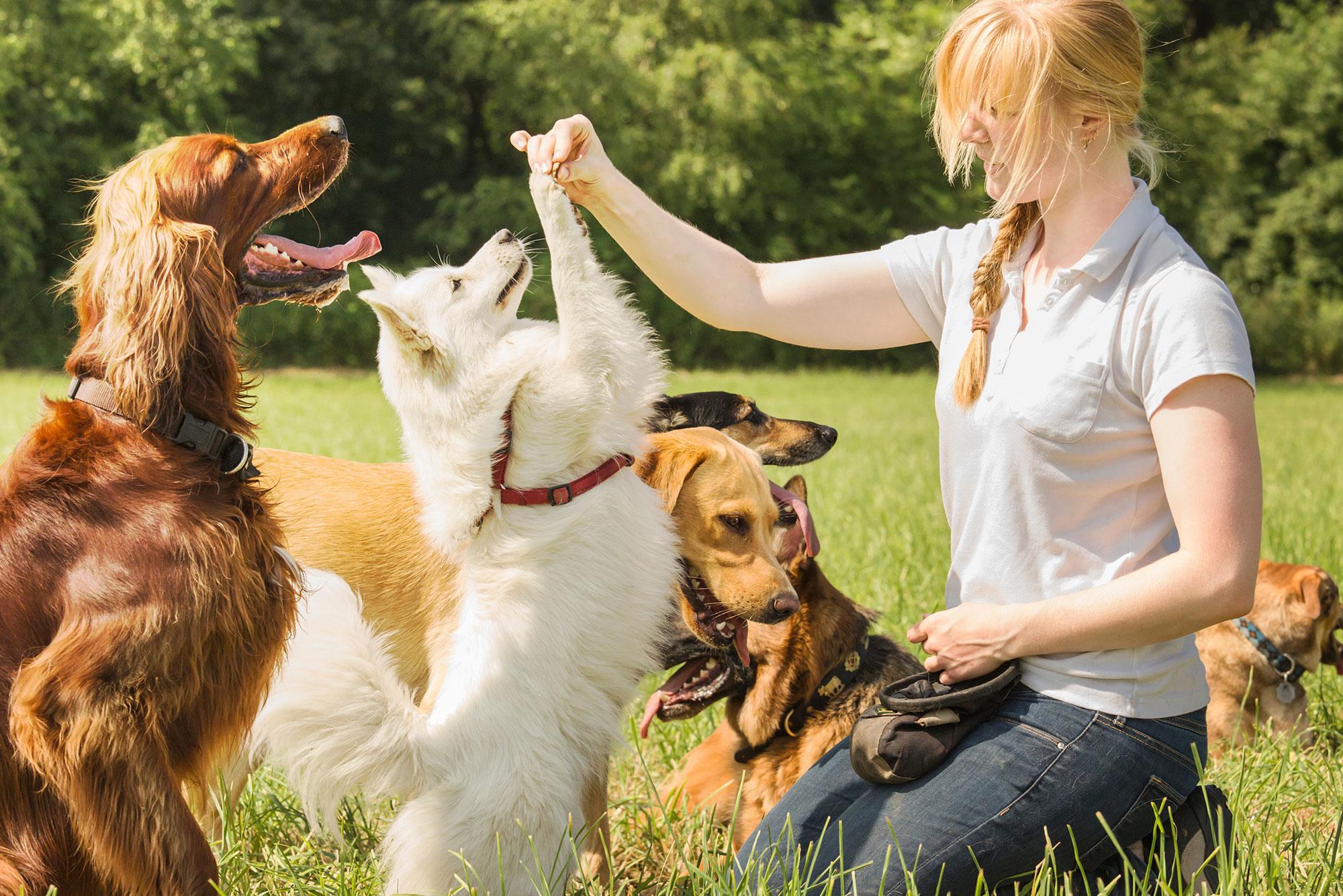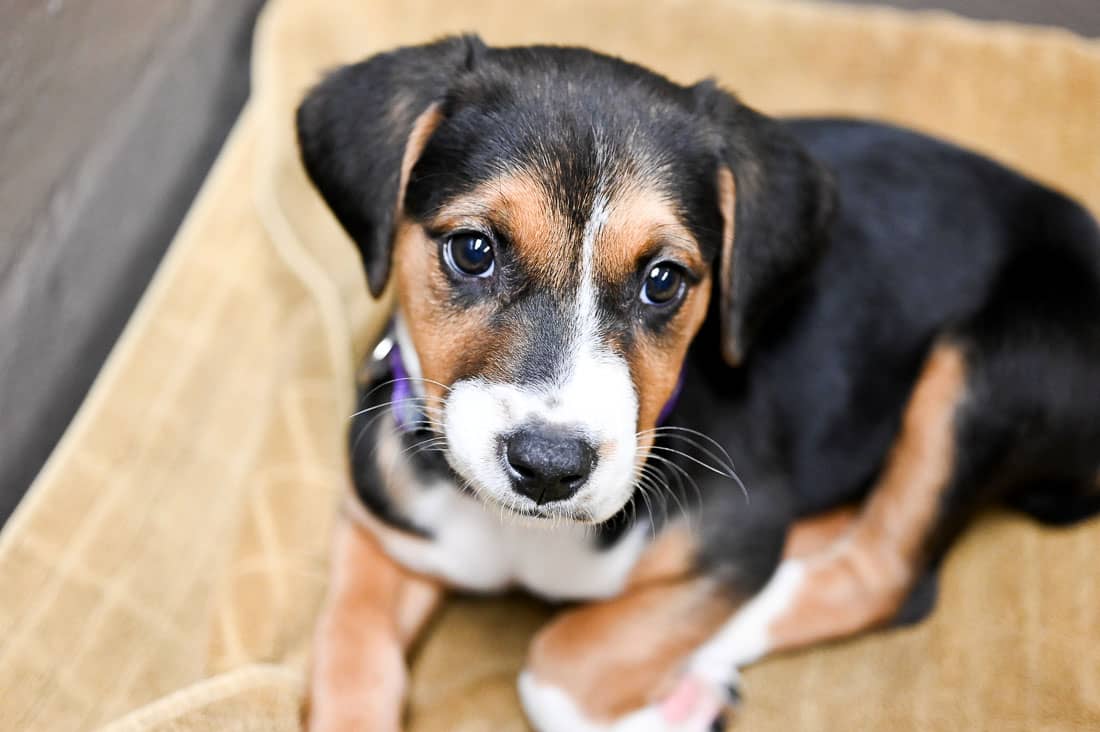Understanding Canine Body Language During Dog Training
Wiki Article
Essential Tips for Successful Dog Training: A Guide for Pet Owners
Efficient dog training is a diverse procedure that requires a critical technique customized to both the pet's temperament and the proprietor's objectives. Understanding just how to browse these barriers can significantly boost the training experience, ultimately transforming the relationship between proprietor and pet dog.Understanding Dog Behavior
Recognizing pet habits is crucial for effective training and fostering a harmonious connection in between pooches and their proprietors. dog training. Canines communicate mostly with body language, vocalizations, and actions, making it crucial for proprietors to interpret these signals properly.
Socialization plays a significant duty in dog actions; exposure to various atmospheres, people, and various other pets can significantly impact a dog's personality. Additionally, aspects such as type features and individual personality need to guide training techniques, as some types might have particular behavioral traits that require tailored techniques. By recognizing these components, proprietors can produce a supportive setting that encourages positive behavior, causing successful training results and a deeper bond with their animals.
Developing Regular Commands
Effective communication with your pet dog starts with establishing consistent commands. This fundamental aspect of training is important for promoting understanding between you and your pet dog. Consistency in the commands you use ensures that your pet dog can accurately connect particular words or expressions with the desired habits.When selecting commands, select clear, unique words that are simple to differentiate and claim from each other. Prevent making use of similar-sounding commands that may confuse your pet dog. Using "rest" and "remain" is suitable, yet "rest" and "hit" might lead to misconceptions.
Additionally, preserve the exact same tone and quantity for each and every command. Pets are delicate to singing cues, so varying your tone can create confusion.
It is equally important to make certain that all relative get on the exact same page relating to the commands used. A united front in command use will prevent blended signals and enhance the learning procedure.
Favorable Support Methods
The power of favorable support in pet training depends on its capability to encourage wanted actions via benefits and appreciation. This technique is grounded in the principle that habits complied with by beneficial outcomes are most likely to be duplicated. By integrating positive reinforcement right into your training program, you can successfully form your dog's habits in a constructive fashion.To apply favorable support, it's vital to determine what encourages your pet, whether it be treats, playthings, or spoken praise. When your pet dog performs a wanted action, such as remaining on command, instantly award them with a treat or affection. This association between the command and the favorable outcome reinforces their understanding.
It's essential to timing the benefits properly; delivering the support within secs of the preferred actions helps your dog make the link (dog training). Furthermore, consistency is vital-- make certain that all family participants use the very same commands and reward systems to avoid complication

Slowly, you can reduce the frequency of deals with as your pet dog learns the actions, transitioning to applaud or intermittent rewards. This method not just promotes a strong bond between you and your pet however also advertises a favorable understanding environment, making training a pleasurable experience for both.
Socialization and Communication
Constantly revealing your pet to a variety of atmospheres, individuals, and various other animals is vital for their social development. Socialization ought to begin early, preferably during the essential window of 3 to 14 weeks, when puppies are most responsive to new experiences. Older dogs can likewise profit from continuous socialization efforts.Present your canine to various setups, such as parks, pet-friendly shops, and city areas. This exposure assists them adapt to numerous stimulations, minimizing anxiety and worry actions. Urge favorable interactions with various other canines and people, making certain that these encounters are risk-free and regulated to foster confidence.
Use organized playdates with courteous canines, as this can boost your pet dog's social abilities and educate them ideal habits. Obedience courses and training sessions also give exceptional opportunities for socialization, enabling your pet to engage with others in a monitored atmosphere.
Screen your pet dog's body movement during communications, as this will aid you evaluate their comfort degree. Progressively boost direct exposure to more difficult scenarios while making sure that each experience declares. A well-socialized pet dog is more probable to exhibit well balanced behavior, making them a pleasure to have in any kind of setup.
Resolving Typical Training Difficulties
Every pet owner will encounter training obstacles eventually, no matter of their dog's age or socialization degree. Recognizing common problems such as stubbornness, disturbances, Find Out More and fearfulness can help in developing reliable techniques for renovation.
Progressively introduce diversions as the pet dog becomes more competent in commands. Short, constant training sessions are this contact form additionally efficient in preserving focus.
Terror can prevent a pet dog's understanding procedure. Progressive desensitization to the resource of worry, coupled with favorable support, can assist minimize stress and anxiety. Patience is crucial; never require a pet dog right into a scenario that causes distress, as this may aggravate the problem.
Ultimately, understanding and addressing these common difficulties with a structured strategy will certainly promote a more effective training experience, reinforcing the bond in between dog and owner while advertising efficient learning.
Conclusion
In summary, effective dog training relies on a comprehensive understanding of canine behavior, the facility of regular commands, and the application of positive reinforcement strategies. Socializing plays an essential duty in creating well-adjusted family pets, while resolving typical training obstacles requires persistence and versatility. By implementing these essential strategies, pet dog proprietors can foster a strong bond with their dogs and advertise desirable habits, inevitably leading to an unified connection in between people and their canine friends.Comprehending pet dog behavior is crucial for efficient Continued training and promoting an unified connection between canines and their proprietors.Socializing plays a significant function in pet dog habits; direct exposure to various environments, individuals, and various other pets can substantially affect a pet dog's personality.The power of favorable reinforcement in pet dog training exists in its ability to encourage desired habits with rewards and praise. By integrating favorable reinforcement right into your training regimen, you can successfully form your pet dog's habits in a useful fashion.
In summary, successful canine training relies on a thorough understanding of canine behavior, the facility of regular commands, and the application of favorable reinforcement techniques.
Report this wiki page